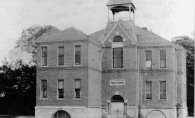Lake Minnetonka was opened to European settlers by the Treaty of Traverse des Sioux, named for a Dakota meeting place, Oiyuwege, one mile north of St. Peter. Minnesota’s first territorial governor, Alexander Ramsey, was eager to open lands to the west to increase the state’s wealth. Many politicians justified their trading food to the Native Americans in exchange for 90,000 square miles of prime land as a form of charity.
Due to manipulation by the politicians and poor translation, the Dakota signed what they were led to believe was a triplicate of the treaty that gave them three cents per acre. In fact, these were “trader’s papers” that gave their profits first to anyone that claimed the Indians owed them. Henry Sibley, who would become governor in 1858, was paid $66,459, a fortune at the time.
Settlers were impatient with Congress to ratify this treaty, so by 1852, many had already begun swarming illegally over the Mississippi, into the territory and around beautiful Lake Minnetonka to stake their claim. After the treaty was officially ratified, the 1862 Homestead Act signed by Abraham Lincoln further enticed settlers to move into the area and get some nice cropland around the lake.
That same year, a drought killed crops across southwestern Minnesota, and a famine seemed inevitable. Native Americans living in that area went to the Lower Sioux Agency near Redwood Falls to claim money and grain from the warehouses owed them as part of the treaty
"Let them eat grass!" the head of the agency supposedly told the Native Americans after they requested food in exchange for their credit. His refusal to open up the storehouses of grain to prevent starvation caused a group of outraged young Dakota to convince their elders to condone an attack on the agency on Aug. 20, 1862. The body of the head agent, Myrick, was later found with his mouth stuffed with grass.
The conflict spread around the Minnesota River and left the Lake Minnetonka area mostly untouched. When the dust settled, 300 whites were killed in the Dakota War of 1862 and no one ever bothered counting the number of dead Native Americans. Sixteen-hundred Indian prisoners were held at Fort Snelling and 392 were put on trial. President Abraham Lincoln personally approved a list of 39 Indians to be hanged in Mankato.
In the end, 38 were executed, making it the largest mass execution in U.S. history. Their bodies were buried in a single grave along the Minnesota River.









